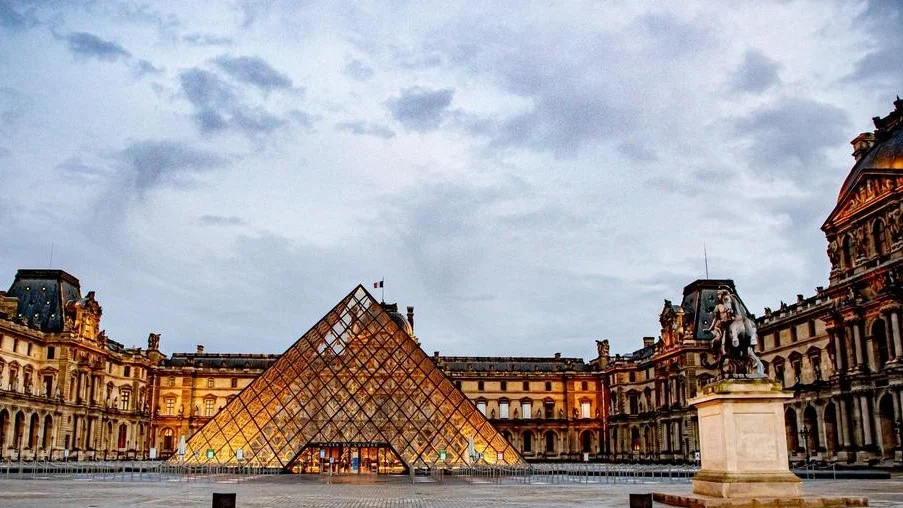A breathtaking robbery at the world-famous Louvre Museum has sent shockwaves through France and the global art community. Two suspects have been arrested for their alleged involvement in a high-stakes heist that saw priceless jewels vanish from one of the most secure cultural landmarks on Earth.
Four Minutes That Shook the Louvre
According to French investigators, the thieves executed their plan with near-military precision. Using power tools, they cut through a window and forced museum security personnel to evacuate under threat. Within minutes, the criminals shattered display glass in the Gallery of Apollo, grabbing jewels worth millions before escaping on two waiting scooters.
Police say the entire operation lasted just four minutes—ending at precisely 9:38 AM, when the suspects sped away through Paris’s narrow streets.
Security Failures Under Fire
The daring robbery has exposed alarming security lapses at the Louvre. A preliminary probe revealed that one in three rooms in the targeted section lacked CCTV coverage, and the only camera pointed at the break-in zone was angled away from the intruders’ entry point.
“This is a wake-up call,” said Louvre Director Laurence des Cars, who admitted the museum’s surveillance system was “outdated and ineffective.” She added that the theft highlighted “a dangerous underestimation of threats to our cultural heritage.”
The Fate of the Stolen Jewels
Experts now fear the worst. Dutch art detective Arthur Brand, often called the “Indiana Jones of the art world,” warned that the stolen jewels may already have been dismantled or melted down.
“Gold and silver can be melted. Gemstones can be recut. Once that happens, the pieces are gone forever,” Brand told the BBC.
If true, it would make recovery virtually impossible, turning this into one of Europe’s most significant cultural thefts in decades.

Tighter Security Measures Nationwide
In an immediate response, France has tightened security across all major cultural sites. The Louvre’s remaining priceless jewels have been moved to the Bank of France’s underground vault, located 26 meters beneath Paris, one of the country’s most secure locations.
The French Ministry of Culture has ordered a full security audit of museums and heritage centers. Officials vowed “zero tolerance” for negligence, promising new investments in AI-powered surveillance, biometric access systems, and emergency response training for staff.
Global Concern Over Cultural Heritage Safety
Security experts argue this theft is not just a French failure but a global warning. With rising art crime networks and advanced burglary tactics, museums worldwide are being urged to modernize their defenses.
“This isn’t merely a loss of jewels,” said one cultural analyst. “It’s a loss of identity, history, and humanity’s shared heritage.”
A Warning to the World
The Louvre heist will likely be remembered not just for the boldness of the thieves but for the vulnerabilities it exposed. Even as the suspects remain in custody, questions linger: How could such a breach occur in one of the most guarded museums in the world?
For now, the jewels remain missing — and the art world watches anxiously as investigators race against time to recover what could already be lost forever.


